M.L.S. Weech's Blog, page 99
November 9, 2016
Book Review: A Halo of Mushrooms by Andrew Hiller
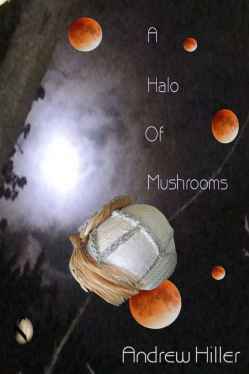 Cover and other images used for review and critique under Fair Use doctrine.
Cover and other images used for review and critique under Fair Use doctrine.Spolier Free Summary: A Halo of Mushrooms is Andrew Hiller’s second published novel. (NOTE: Hiller did a story about me on his blog which I talked bout in my blog about My Journey So Far.) It’s about Derik a magical healer from another land who carries with him a very special mushroom. If I’m being honest, the cover leaves a lot to be desired. I implore you to ignore the cover and read the book as it’s a treat. It reminded me of Pratchett’s Discworld Series. I’ve mentioned a few times I’m a huge fan of Tiffany Aching’s saga, but not such a fan of The Color of Magic. This book has the traits of both books that I do like, and I feel fans of Pratchett would at least (if not enjoy) appreciate Mushrooms. In the book, Derik has to find the right location to plant his magic mushroom all while earning a dollar and avoiding cats and monsters who are hunting him down for stealing the magic spud.
Character: There are three main characters in this book, though it focuses on Derik. The other two characters are Imani, a baker, and Lara, a scientist. The characters are real enough, with decent identity and progress, but for my money, I think the most of Imani. Derik is the most well rounded of the characters, and we get a lot of insight into him, but Imani grows on the reader. Lara has some very interesting aspects, but I felt like her characters had some missed opportunities. What I feel makes this book stand out about these characters is that while they each individually may be lacking, this is a pretty strong ensemble cast. I realize as I write this that while I wish each character was more fleshed out, I moved through this book because of the way they interact with one another. For those who read my blog on plotting, this was a pretty effective relationship plot, and it’s honestly the strongest part of the book. These characters know Derik as a man trying to do something nice or right. They bond over their desire to help him.
 Exposition: The exposition of this book is a little on the heavy side. There are a few segments where I feel Hiller is giving scope to the book, but I don’t think I personally needed it. Though there are patches of over exposition, they don’t slow the pace or enjoyment of the book.
Exposition: The exposition of this book is a little on the heavy side. There are a few segments where I feel Hiller is giving scope to the book, but I don’t think I personally needed it. Though there are patches of over exposition, they don’t slow the pace or enjoyment of the book.
Worldbuilding: I’d say this is the weakest area of the book. The magic system here doesn’t make a ton of sense. Now…I have to explain that I’m a fan of either (1) books that have a sense of wonder in which the magic is a complication or (2) books that have well understood (even if complex) magic systems that are part of the resolution. This book maintains a sense of wonder, but I felt that cost something at the end. However, it wasn’t something that brought the book too far down as the reader has enough understanding of how the worlds work to believe what’s happening. Once the reader understand the effects of the “Poms,” things flow pretty well. Now, I just said the exposition here was heavy, and how does one explain a magic system with out more of what was already a lot of exposition? So I see the sense in limiting the explanations to what the readers must have.
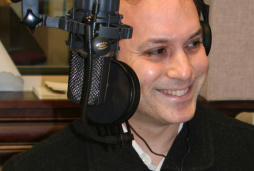 Dialogue: There’s a scene near the end of the book between Imani and one of her regular customers that I felt was a sign of a next level from Hiller. I wouldn’t begrudge an editor telling him to delete it, but it was strong writing that helped reveal the character. We see this again when Derik talks to a character referred to as Baba. Those two scenes are great examples of how dialogue can move a plot and define a character.
Dialogue: There’s a scene near the end of the book between Imani and one of her regular customers that I felt was a sign of a next level from Hiller. I wouldn’t begrudge an editor telling him to delete it, but it was strong writing that helped reveal the character. We see this again when Derik talks to a character referred to as Baba. Those two scenes are great examples of how dialogue can move a plot and define a character.
Description: I’m not as over the moon about description as some. It shows in my own writing, and it’s something I’m working on because I understand it’s something readers look for. With that said, I couldn’t tell you what any of the characters look like. The clearest memory I have is of a certain car that got great mileage without a lot of gas. There’s a lizard I can remember clearly as well. This didn’t bother me at all because of how much less invested I am in that sort of thing, but I evaluate the quality of description based on how much I can remember a day or so after reading the book. There are a few characteristics about Imani and Derik I can recall, but that’s about it. For my money, it didn’t bother me at all, but readers who want down to the thread count descriptions may find this element of the book lacking.
Overall: I want to go back to what I said earlier. A lot of the readers who enjoy the Discworld saga find a charm in the satire and melting pot of ideas. For me, this book has that sort of feel to me. The charm in my opinion is Derek’s sense of wonder in our world. I think that’s the main reason I enjoy it so much. Hiller shows our world from the point of view of someone from another world, and it made me feel more magic in our every day corner of the known universe. The ending was a cliffhanger, which I don’t generally like, but it did satisfy the plot of the book while pointedly indicating what I hope is a equally endearing sequel.
Thanks for reading
Matt


November 5, 2016
Plotting: Where the Heck is This Book Going?
Recently I posted a blog about how I develop characters. While doing that, I talked about how in in character files, I outline each character’s progression. This is commonly called plotting. You use structures to develop each character’s through-line. In the post mentioned above, I discussed the need for each character to be their own main character. I also mentioned they need more than one plot.
The bulk of my plotting terms come from Brandon Sanderson’s online lectures. I may have altered some terms because they make more sense for me that way, but those have the bulk of the structures I use.
As I grow, I consider other options, but this is a solid list. Essentially what it boils down to is asking yourself, “How are my readers going to know my character is growing.” Reminder: Regression is a form of growth.
I always knew about the Three Act Structure and the Hero’s Journey. The Journals of Bob Drifter follows a three act cycle. The “Matt breakdown” of this is: Introduce Hero. Make life suck. Resolve issues established in Act Two.
Rather than rehash what is already covered brilliantly in the links above, I thought I’d do what I love best, and provide you with some examples. I call these case studies. I learn best by looking at what others have done and seeing how it applies to what I’m trying to accomplish.
Quintessential Editor covered the heroes’ journey quite well, and Star Wars is a textbook example. Corey’s breakdown and Episode 4 are more than enough to go on.
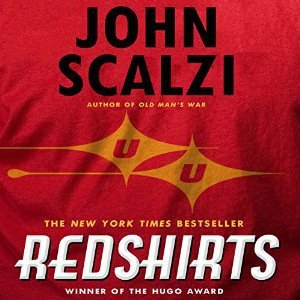 Covers of Redshirts, Awake in the Dark, The Eye of the World, Artemis Fowl, and Dragonflight used for educational study under Fair Use doctrine.
Covers of Redshirts, Awake in the Dark, The Eye of the World, Artemis Fowl, and Dragonflight used for educational study under Fair Use doctrine. Mystery: If your character is trying to learn something, you’re writing a mystery. It could be who killed John Doe or what’s wrong with the water in Ladonis. (I made those up to give you examples, so if you find something I accidentally touched on, I didn’t mean it.) Now, I’ve sung Sanderson’s praises a lot, so I feel talking about Elantris would be a bit unfair here. Let’s give someone else a little credit. Redshirts by John Scalzi is type of mystery. It’s hilarious. It’s obviously a parody (I’ll track down my review and post it on the new blog soon). The point is, the main character is trying to figure out what exactly is going on. I loved this book, but what pushed me through it was each clue the main character had to get him to realize what was happening. One of the main plotlines for my sixth book (New Utopia) is a mystery. Sanderson mentions Big Problem plots. I sort of lump this in with mystery as whatever they’re trying to do, they still have to figure out how to do it.
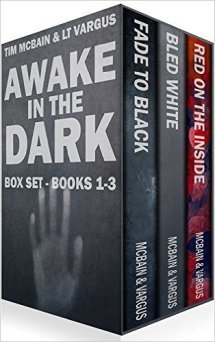
Try Fail: I tried to make this a sub plot as well because the character is trying to achieve something. The mystery would be how to do it, but what makes this plot stand alone better for me is the fact that you don’t actually need a large objective. I use this more for character than plot. Grimm is essentially a try fail plot in The Journals of Bob Drifter. If Grimm didn’t get closer to his ultimate objective, there’d be no tension, and his conflict with Bob would feel meaningless. My takeaway here is that the more a person fails to do something, the more surprising it is when the character succeeds. Now I’ve peddled my book several times over, so let’s talk about another book. Fade to Black by Tim McBain is a more “problem” based thing, but what kept me reading was the fact that I wanted to know if the main character’s new approach was going to work.
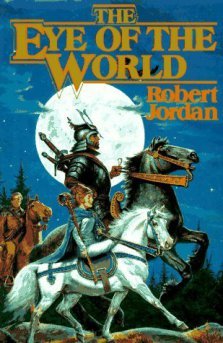 Travelog: Sanderson mentions a few in the link I gave you, and I’ll elaborate on one of those. The Eye of the World by Robert Jordan does a lot for me as a reader, but it also teaches me a lot. I was 90 pages into it and wanted to shout at my brother for recommending it, but he’d ordered me to read the first 100 pages, and so I did. If I use my analytical eye, I can find out why. Readers want to know the story is moving. The first 100 pages of The Eye of the World is all character introduction. Now, when I read book 13, and Sanderson tied back to that first 100 pages, it brought tears to my eyes (I’ll talk about endings in a future blog). So why was I so frustrated? The Eye of the World is essentially group of people trying to get somewhere. You have a map in the book that tells you where you are as a reader. The destinations change as well, but you always know you’re moving because the characters are striving to get somewhere. The first 100 pages of Eye of the World might frustrate readers because the characters don’t move. That 100 pages sets up the other 14 books (counting the prequel). They’re important and even cherished, but as a stand-alone novel, I wouldn’t have wanted to finish it had I not been ordered too. I’m glad I did. But the book moves much faster as we follow the characters and where they go.
Travelog: Sanderson mentions a few in the link I gave you, and I’ll elaborate on one of those. The Eye of the World by Robert Jordan does a lot for me as a reader, but it also teaches me a lot. I was 90 pages into it and wanted to shout at my brother for recommending it, but he’d ordered me to read the first 100 pages, and so I did. If I use my analytical eye, I can find out why. Readers want to know the story is moving. The first 100 pages of The Eye of the World is all character introduction. Now, when I read book 13, and Sanderson tied back to that first 100 pages, it brought tears to my eyes (I’ll talk about endings in a future blog). So why was I so frustrated? The Eye of the World is essentially group of people trying to get somewhere. You have a map in the book that tells you where you are as a reader. The destinations change as well, but you always know you’re moving because the characters are striving to get somewhere. The first 100 pages of Eye of the World might frustrate readers because the characters don’t move. That 100 pages sets up the other 14 books (counting the prequel). They’re important and even cherished, but as a stand-alone novel, I wouldn’t have wanted to finish it had I not been ordered too. I’m glad I did. But the book moves much faster as we follow the characters and where they go.
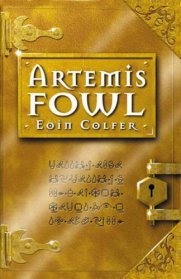 Relationship Plot: I was about to sing C.L. Schneider’s praises again, but I feel if I’m too heavy handed, I’m not giving you readers enough material to read. I want to give a lot of books some credit. I haven’t spoken about the Artemis Fowl series by Eoin Colfer, and this is a good spot to do so. Here, you’d have to read the first three books to analyze the plot I’m talking about, the relationship is between Artemis and the magical creatures. The most used plot is “People meet and don’t like each other; then they get to know each other and fall in love.” There are many types of love, but the story could be about the breakdown in a relationship too. (Remember, where I say progress, change might be a better term).
Relationship Plot: I was about to sing C.L. Schneider’s praises again, but I feel if I’m too heavy handed, I’m not giving you readers enough material to read. I want to give a lot of books some credit. I haven’t spoken about the Artemis Fowl series by Eoin Colfer, and this is a good spot to do so. Here, you’d have to read the first three books to analyze the plot I’m talking about, the relationship is between Artemis and the magical creatures. The most used plot is “People meet and don’t like each other; then they get to know each other and fall in love.” There are many types of love, but the story could be about the breakdown in a relationship too. (Remember, where I say progress, change might be a better term).
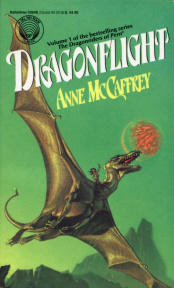 Time Bomb: This can be quite literal or not. Essentially this device is in effect when you put a limit on something. Murder mysteries do it well. Every time you pick up a murder mystery, you want the hero to find the villain before someone else dies. It’s subtle there. It’s a lot more literal in Dragonflight by Anne McCaffrey. Thread is going to fall any day now, and Pern doesn’t have enough dragons. The second part of New Utopia (which will become its own book after I revise it) has one of these.
Time Bomb: This can be quite literal or not. Essentially this device is in effect when you put a limit on something. Murder mysteries do it well. Every time you pick up a murder mystery, you want the hero to find the villain before someone else dies. It’s subtle there. It’s a lot more literal in Dragonflight by Anne McCaffrey. Thread is going to fall any day now, and Pern doesn’t have enough dragons. The second part of New Utopia (which will become its own book after I revise it) has one of these.
What I wanted to do with this post is show you the types of plots that are out there and give you a few examples to study up with. I hope it helps.
Thanks for reading,
Matt


November 4, 2016
A 3-Star Review for The Journals of Bob Drifter
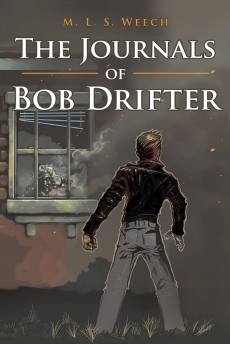 While surfing the internet, I found a very kind 3-star Review (She actually gave it 3.5 stars) for The Journals of Bob Drifter. There are a few reasons why this review is special.
While surfing the internet, I found a very kind 3-star Review (She actually gave it 3.5 stars) for The Journals of Bob Drifter. There are a few reasons why this review is special.
First: Just read the review! She said some amazingly kind things, particularly about the ending. I took the most care in making sure the end of my book was satisfying. So every time someone mentions the ending in a good way is particularly rewarding in my eyes.
Second: This is a review for the auidobook. I found Jess through her blog The Audio Bookworm. I was thrilled to see someone dedicated to reviewing audiobooks, as I’m a HUGE fan of them. If you like audiobooks and want detailed, thoughtful reviews on a book before reading, see if she’s read it. You’ll thank me when you do.
If you’re an author, and you’ve written an audiobook, you should strongly consider sending your work to her because it’s hard enough to get reviews, getting an audiobook review is that much more difficult.
You can also follow Jess on Twitter and Facebook.


November 2, 2016
One Nut’s guide to Developing Characters
 Character development is a fluid process for me. I consistently try new things and keep what I feel worked and get rid of what I don’t like. Sometimes I bring those things I don’t like back because as much as I don’t like them, they help me create more realistic, sympathetic characters.
Character development is a fluid process for me. I consistently try new things and keep what I feel worked and get rid of what I don’t like. Sometimes I bring those things I don’t like back because as much as I don’t like them, they help me create more realistic, sympathetic characters.
I put a lot of thought into how to present this because of how fluid my process is. I thought about taking you through how I evolved and what I tried. I can do that if anyone is interested, but what I think anyone would use this for is to put what I know I’m going to do when I start writing my eight book (Sojourn is a short story and Elele is already developed).
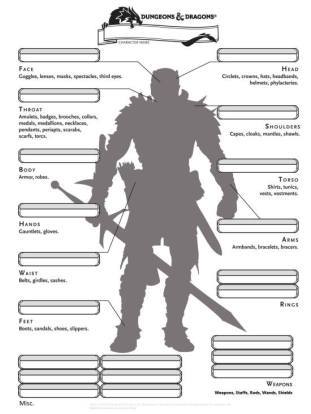 Quintessential Editor covered some ground with his blog about using dice to create characters. This comes in handy mostly because of the character sheets for me. I did this a few times. It worked, but I thought it was too time consuming, so I dropped the sheets. Now I’m brining them back because some books have WAY too much for me to track. I have word processing character sheets, and I may adapt those, but I need something that helps me track my characters, particularly physical attributes.
Quintessential Editor covered some ground with his blog about using dice to create characters. This comes in handy mostly because of the character sheets for me. I did this a few times. It worked, but I thought it was too time consuming, so I dropped the sheets. Now I’m brining them back because some books have WAY too much for me to track. I have word processing character sheets, and I may adapt those, but I need something that helps me track my characters, particularly physical attributes.
I also took full advantage of Brandon Sanderson’s online lecture about Character Creation. That helped me mostly as it came to plotting. (Note: Today, I’m talking about development. That way, I can talk about plotting later.) But it does give me a snapshot, and it helped me streamline (in my case too effectively) my character sheets.
My character sheets start as simple pages in a word processing document. They get larger as I start plotting the character.
A note on archetypes. I outlined Caught using archetypes. While I want to know the role my characters play in the book, what I found this ended up doing was make my characters too cookie cutter. They fit their role in the plot, but it made them plot devices and not characters. I think what I’ll do next time is add the archetypes to the character sheet, though this still scares me. (NOTE: As I publish this, I’ve again decided against it.) I’m a very literal, linear thinker, and I don’t want to force my characters in a direction they wouldn’t go just so they fit some standard archetype.
 Where my ideas come from: I teach my students about this concept where a writer has an idea for a story. I got it from one of my sources we used to develop the course, Telling True Stories. They call it the glimmer moment. I exist in a constant state of glimmer infinity. I constantly have flashes of imagination or insight that I think would be amazing. I jot them down or commit them to memory (let the debate on memory begin here). When enough of those ideas arrive to formulate one consistent narrative, I know I have a story. The idea for Caught came to me when my mom told me about a nightmare she had had. (Am I a bad son?)
Where my ideas come from: I teach my students about this concept where a writer has an idea for a story. I got it from one of my sources we used to develop the course, Telling True Stories. They call it the glimmer moment. I exist in a constant state of glimmer infinity. I constantly have flashes of imagination or insight that I think would be amazing. I jot them down or commit them to memory (let the debate on memory begin here). When enough of those ideas arrive to formulate one consistent narrative, I know I have a story. The idea for Caught came to me when my mom told me about a nightmare she had had. (Am I a bad son?)
I mention that because sometimes the main character develops clearly in my mind. Sometimes they don’t. What I mean is I have a sense for the emotional description of the character, but not the physical one. When I see the character clearly in my mind, I don’t fight it. When it doesn’t matter, I let chance determine those characteristics. For Perception of War, the flip of a coin determined the gender of my character. A four-sided die determined his ethnicity and color. I’ll probably post a blog about this one day, but I think characters are people.
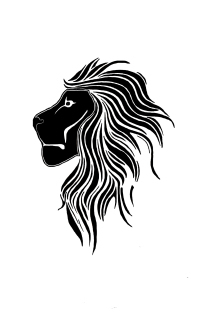 There are several fantastic stories out there where race, religion, and gender are arcs. When they aren’t I feel silly developing a white male character simply because I’m a white male. Sal, the main character in Caught is a protector and a Soldier. He was always a man in my imagination, but I’ll tell you frankly the majority of the service members I respect most happen to be women. It’s not a knock on one over the other, just a point I’m trying to work to. He was a man, because of the dynamic I wanted to create with a few other characters. He was white because my four-sided die said so. He’s from Philly because that’s where my finger landed on a map. When these traits matter, writers should take great care. They always have significance though because they’re parts of what make a person who he (Sal) is. None of those characteristics affected the plot, so I let chance decide because it’s fast, and in my mind, it’s the best way I have so far to make sure the diversity in my books comes anywhere near the diversity of life.
There are several fantastic stories out there where race, religion, and gender are arcs. When they aren’t I feel silly developing a white male character simply because I’m a white male. Sal, the main character in Caught is a protector and a Soldier. He was always a man in my imagination, but I’ll tell you frankly the majority of the service members I respect most happen to be women. It’s not a knock on one over the other, just a point I’m trying to work to. He was a man, because of the dynamic I wanted to create with a few other characters. He was white because my four-sided die said so. He’s from Philly because that’s where my finger landed on a map. When these traits matter, writers should take great care. They always have significance though because they’re parts of what make a person who he (Sal) is. None of those characteristics affected the plot, so I let chance decide because it’s fast, and in my mind, it’s the best way I have so far to make sure the diversity in my books comes anywhere near the diversity of life.
That brings me to character sheets. Like I said, I’m going to bring more elements in, but here’s Bob’s character sheet.
START
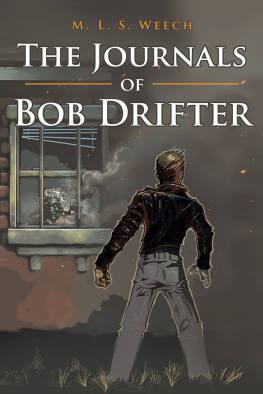 Bob Drifter : Robert Drifter
Bob Drifter : Robert Drifter
6’3”
230 lbs
Light brown hair
Brown eyes.
Bob’s exactly what I named him. He’s a drifter. In personality as well as occupation. He’s accepted who and what he is, for now at least, because it’s all he’s known. He’s kind and takes it upon himself to be more of a guide than a conduit. Others in his field don’t take such measures, but a part of who Bob is demands a certain courtesy. He doesn’t remember anything at all about his life before his work. A part of him is curious, but, given his nature, he accepts things without much argument. Things are. Part of this stems from his belief that change isn’t possible for him.
END
Now take a look at Elele’s. This is her character sheet from Sojourn. Please know I’ve absolutely deleted a few spoilers, and that may cause some confusion, but I’d like people to read the book and be entertained by some of the twists. Note the differences between her character sheet and Bob’s:
START
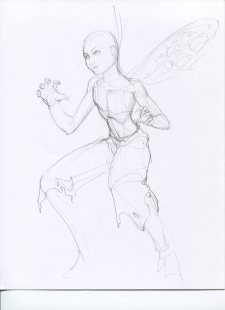 This was a very early, very rough sketch of Elele by an artist named Robert Quill. This image was developmental. I’ve had other people work on that, but it was hard because I’ve only JUST really gotten a good mental image of her. Hence why I need these sheets.
This was a very early, very rough sketch of Elele by an artist named Robert Quill. This image was developmental. I’ve had other people work on that, but it was hard because I’ve only JUST really gotten a good mental image of her. Hence why I need these sheets.Elele’Therios
(The trouble with Sefaram is that they all look essentially the same. Hair is a thing. But they’re very hard to tell apart unless you look at their Faline. These fractal patterns are the way Sefaram see one another. Where humans look at skin color facial shapes (shapes are a thing for Sefaram too), Sefaram rely most on the inner-most ring of the faline.)
Age: 22
Occupation: Mathematician
Hobby 1) Travel
Hobby 2) mathmatics.
Height: 60.8 inches – 5’1”
Weight: 161 pounds
Build: Sleek. (She’s twiggy even by Seferam standards.)
Skin Tone: Black (All Sefaram are)
Voice Quality: Analytic. Snappy. Quick. Clips words.
Hair Color: Black (All Sefaram with hair have this)
Hair Length: Mid-shoulder
Hair Style: Rolled and braided. What would you call cornrowed hair that is braided into multiple braids…then braided again? (I don’t speak hair). (NOTE: I did some research and talked to a friend. The most accurate term I found was braided weave)
Eye Color: Black (All Sefaram)
Eye Shape: large ovals longer than tall. (deer eyes) (All Sefaram)
Face Shape: Round.
Freckles: None (Sefaram have none)
Moles: None (See above)
Scars: None as of Sojourn. (SPOILER DELETED INFORMATION)
Faline: Outter pattern (FAMILY IDENTIFIER): Four tear-drop-shaped loops in which the points meet in the middle. Inner Pattern (INDIVIDUAL IDENTIFIER): A pattern resembling a seven-pedaled flower blossom. (NOTE: Faline are ultraviolet patterns on the mid-section of each Seferam. Think of them as luminescent tribal tattoos that follow fractal patterns).
Clothing: (All Sefaram leave their faline exposed. Men usually go bare chested. Elele wears what are considered prudish clothes. No style or fashion (especially since the bad guy’s arrival). She were’s a simple outfit that ties around the neck. It covers her breasts. Cloth covers her sides and becomes a mid-calf length dress. It’s always a simple color with no ultraviolet patterning (a common fashion trend these days). She wears simple leather shoes. (SPOILER INFO DELETED)
Jewelry: None. Sefaram don’t wear it. Their bio-electro-magnetic power plays hell with metal.
faline: For Seferam, they’re an emotional cue. They pulse in different ways the way humans blush or flush.
END
You’ll see a lot of elements from the above-mentioned Sanderson Lecture there. Like I said. I can promise you that second hobby gave Elele a dimension I never really expected. Little things like that help me get deeper into her character. I didn’t realize math was going to be such a huge part of her character until I gave her that hobby. It then became her occupation. It’s now one of her key assets to how she sees the world and progresses in her plot.
Not all of this became cannon. (Note the picture, she looks very different now that she’s all fleshed out) I left in some of my self-notes. They’re my musings, motivations or research sites for me to get a better feel. I did delete a bunch of my self notes because they were far too spolierific for me to include.
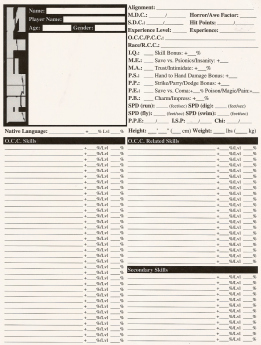 So my next evolution will blend all of these to help me develop a character in terms of physical attributes, motivations, archetype, and plots. Where Corey uses his D & D sheets, I was always a Rifts man myself. I’ll let those character sheets provide the physical attributes. I’ll let the Sanderson lecture round the character out. Then I’ll let them work together to make the character more realistic. Then I’ll let the plotting provide the finishing touches.
So my next evolution will blend all of these to help me develop a character in terms of physical attributes, motivations, archetype, and plots. Where Corey uses his D & D sheets, I was always a Rifts man myself. I’ll let those character sheets provide the physical attributes. I’ll let the Sanderson lecture round the character out. Then I’ll let them work together to make the character more realistic. Then I’ll let the plotting provide the finishing touches.
I feel this needs a summary:
1) Identify character. Leave what speaks to you alone and let chance determine all other physical attributes. For Elele, I knew she was female, and I knew what species she was. I also knew what culture I would borrow from most heavily for that species.
2) Name the character. (I’m all over the place here. I do everything from a quick study of names, to popular names of other cultures. Sometimes I look for what a name means in a language I best feel fits the culture of the character. When all else fails, I use a . For Elele, I realized I liked the idea of palindrome names. There’s a mathematical significance to that (and also one of the other species in the book) that I felt was appropriate.
3) Fill in physical attributes. This includes race, species and other aspects of the character’s background.
4) Establish occupation, hobbies and goals. (this is where some plotting comes in).
 5) Begin plotting. This is the most critical step. Every character is the main character in THAT character’s mind. So I plot as if this character is in her own story. I’m not married to this plotting or outline. Elele’s actual arc has some significant differences from the outline, but not who she is or what she does.
5) Begin plotting. This is the most critical step. Every character is the main character in THAT character’s mind. So I plot as if this character is in her own story. I’m not married to this plotting or outline. Elele’s actual arc has some significant differences from the outline, but not who she is or what she does.
This gives me the freedom to get to know my characters in my own natural way. I’m a discovery writer at heart, and I need some room for that to work. What I don’t ever do is start plotting before I get a sense for the core of my character. When I outline one way, then realize my character wouldn’t do that, I don ’t fight it. Early on in Elele’s arc in Images of Truth, Elele was supposed to act and work in one way. Then I realized she wouldn’t handle that situation in the outlined manner. Her decision was more heroic, and led to better conflict and emotional payoff.
(NOTE: I’m talking about her role in Images of Truth, not Sojourn. Sojourn is a prequel to Images.)
Every character has a core just like every person. I find that core by gifting them traits. I take something from a character I love. I take something from someone I love. I take something from someone I don’t like very much. Then I take something from myself. I blend them together and it makes a new character I understand very well.
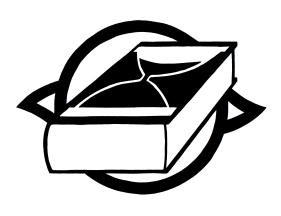 Let’s look at Bob: His part-time job and love of reading came from me. His drive to understand came from my mom. His love of quoting things came from Beast of the X-Men. I won’t tell you where his frustrating ability to mope comes from, because I’m not trying to dime out people I’m not actually a big fan of. (Note, I said people I don’t like very much. Me not liking a person in no way makes them bad or even unlikable. I feel naming said individual would borderline on slanderous.)
Let’s look at Bob: His part-time job and love of reading came from me. His drive to understand came from my mom. His love of quoting things came from Beast of the X-Men. I won’t tell you where his frustrating ability to mope comes from, because I’m not trying to dime out people I’m not actually a big fan of. (Note, I said people I don’t like very much. Me not liking a person in no way makes them bad or even unlikable. I feel naming said individual would borderline on slanderous.)
Doing that is what gives me a picture for how they would handle situations. We writers need to remember though that the horrible things we put our characters through is going to change them. If it doesn’t, it won’t feel realistic. I get a baseline from this, then let their experiences shape how they’ll handle future decisions.
I hope that helps. Honestly, it’s just the way I do it. How do you do it? Was this helpful? Any tricks or resources you like? Feel free to say as much in the comments below.
Thanks for reading
Matt


October 31, 2016
Yet Another 5-Star Review!
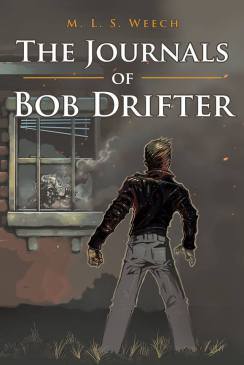 I was happy to log on the other day and see another 5-star review for The Journals of Bob Drifter. You can see the full review here on Amazon.
I was happy to log on the other day and see another 5-star review for The Journals of Bob Drifter. You can see the full review here on Amazon.
This review comes from Author Alice Langholt. Her book First Family was a Readers’ Favorite 5-star novel, and is available via paperback and kindle. It’s the story of what happened to Adam and Eve after that fateful bite of the apple.
I’m always happy to receive reviews. Positive reviews are even greater, especially when they’re from other authors. I’m grateful to Alice for reading my book and feeling good enough about it to post such a great review. I hope giving you and your book a shout out in some small way shows my appreciation to you.


October 29, 2016
Weaving Plots: A Way to Add Dimension to Characters
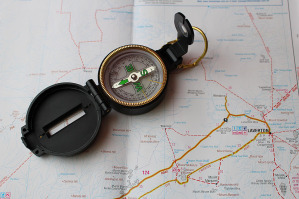 I’ve been reading a lot about plotting on blogs, and that always gets me thinking about characters with dimension. I’m not honestly sure if there is a distinction in this term from depth, but I feel like there is because what I’m talking about today has more to do with plots than traits.
I’ve been reading a lot about plotting on blogs, and that always gets me thinking about characters with dimension. I’m not honestly sure if there is a distinction in this term from depth, but I feel like there is because what I’m talking about today has more to do with plots than traits.
One day I’ll walk you all through how I develop characters. I started one way, added a few things, twisted them around and landed at my process on character development. I might have even touched on it here and there already, but while I’d like to give you one place to go for my method of development, I want to focus on plotting.
So let’s start with how I learn everything, utter failure. I’ve said it a lot. Failure is great. It’s wonderful. Oh, it never FEELS very good, but it’s still important. I quite literally have scars on my body. Each one (I promise I’m not exaggerating) was preceded by me saying, “This is gonna be AWESOME!” and then I hurt myself.
The first completed manuscript I wrote was AWESOME! (and by that I mean awful, and has since left me emotionally scared). There are many reasons for this, but looking at this deep red line across the soul of my inner author, I think the biggest problem I had was that my characters each only had one plot, and those plots were all secondary to the overall plot. People just don’t work that way.
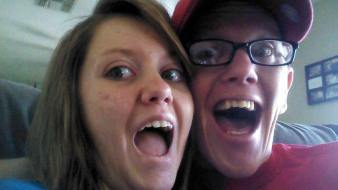 She was a freshman then (her eyes were shut in the image I took of us when I was teaching her to drive). But this is me and The Junior on one of my vacations. I’m so proud of the fact that she takes after her uncle.
She was a freshman then (her eyes were shut in the image I took of us when I was teaching her to drive). But this is me and The Junior on one of my vacations. I’m so proud of the fact that she takes after her uncle.Think about your day? What do you do? Even if you break your day down into “Go to work,” “Come home,” and “Go to bed,” that wouldn’t come close to describing your day. As I write this, I’m on vacation with my family. One of my elder nieces, (she whom I call “The Junior,” who also happens to be an awful lot like her uncle) and I had the chance to sit down. I haven’t seen her in a year.
“So what’s been going on?”
“Not much,” she answered.
I went on to explain that I seriously doubt nothing much happened over the course of the year I’ve been unable to really sit down and talk. Oh, social media and cell phones allow for the highlights, but I wanted the directors cut edition of The Junior’s life.
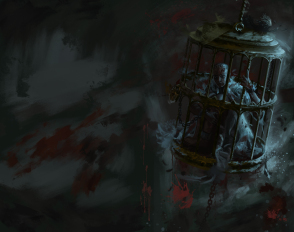 That got me thinking about my editor’s comments regarding my Fourth Draft of Caught. We were discussing a lot of arcs and he told me “readers expect more in fiction.” You see, even now, Caught is very cinematic in structure and prose. I did that by choice, and I may pay the price when it comes to sales and reviews, but I desperately needed something faster after writing The Journals of Bob Drifter. That doesn’t mean I ignored my editor. In fact, I feel a lot more satisfaction with this Fifth Draft.
That got me thinking about my editor’s comments regarding my Fourth Draft of Caught. We were discussing a lot of arcs and he told me “readers expect more in fiction.” You see, even now, Caught is very cinematic in structure and prose. I did that by choice, and I may pay the price when it comes to sales and reviews, but I desperately needed something faster after writing The Journals of Bob Drifter. That doesn’t mean I ignored my editor. In fact, I feel a lot more satisfaction with this Fifth Draft.
So how do I do it? In short, I remember people do more than one thing a day. Heck, sometimes people do more than one thing at a time (sort of, but don’t throw research disproving multitasking at me).
There are a lot of plots out there. Some also call them structures. Others call them arcs. Quintessential Editor did a few blogs about them recently.
I didn’t really do this with Journals or Caught. I’ve been doing it ever since. What I do now is plot each character before I combine all of those plots into one outline. I keep aware of what opportunities arise, and I’m not afraid to let them unfold. This is where those dimension comes into play. Let’s do an exercise:
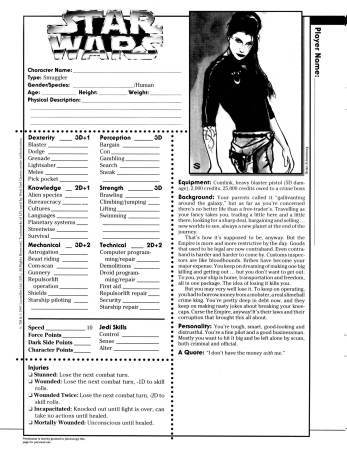 Think of a character. Need help? Okay. I’m going to flip a coin. Heads for man.
Think of a character. Need help? Okay. I’m going to flip a coin. Heads for man.
*flips coin* (I do this whenever gender isn’t a large concern. I even did this with my main character in my seventh book).
TAILS…Woman it is.
How old is she? More importantly, what does she want? Well, since I’m here visiting The Junior, let’s start with what she wants. She wants to go to college and study theater. (See…I told you she was a lot like her uncle!) Sorry…I think VERY fast. What just happened is a lot like my process. I flipped a coin, determined a gender. The gender got me thinking about someone I love. I took that real struggle, multiplied it by the power of “Fantasy” and got this:
A Young Girl wishes to become a Mistress of Transformation. Why? To what end? When I talk about character development, I’ll go into more detail, but I like showing you HOW I think. Anyway. I have my first plot. Because I tend to subscribe to Sanderson’s online lectures, I call this particular plot a “travelogue.” Why? Because she wants to go to transformation school. Where Frodo had to get to Mount Doom, from a macro perspective you have a character who is in one place (high school) and wants to get to another (college).
This can even be what I call the “main plot.” However, on her way to becoming a college student, there’s more that happens. She has to earn money. She has to gain references. She has friends in high school that she may leave. She has to confront the Administer of Admissions. (I’m seriously developing a plot as I do this, I welcome you to do the same.)
Each of those other objectives are plots in and of themselves. They’re side stories occurred on the way to the main objective.
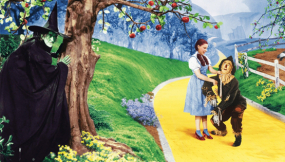 Now let’s take an easier, better-known case study. Wizard of Oz. Would we care NEARLY as much for Dorothy if she told Scarecrow, “Thanks for the directions,” and moved along on her way? She could have. The Tin Man is an even better example. Some subplots (at least for me) are discovered. (Oh crap, my character wouldn’t just leave some poor tin dude sitting there frozen…well…I guess this book’s going to get a little bigger while I work this out.) Others are plots you see coming. (Well, the Wizard isn’t just going to jump to help her.)
Now let’s take an easier, better-known case study. Wizard of Oz. Would we care NEARLY as much for Dorothy if she told Scarecrow, “Thanks for the directions,” and moved along on her way? She could have. The Tin Man is an even better example. Some subplots (at least for me) are discovered. (Oh crap, my character wouldn’t just leave some poor tin dude sitting there frozen…well…I guess this book’s going to get a little bigger while I work this out.) Others are plots you see coming. (Well, the Wizard isn’t just going to jump to help her.)
My point is, you want your character to have many plots and objectives. They may all arise as part of a single goal, but life isn’t that easy, so fiction shouldn’t be. What sort of plots are out there? Well, again, I put a LOT of stock in Sanderson’s online lectures, so I’ll just share that website with you here. Brilliant teacher though I think he is, I know there’s more info out there, so please share it in the comments below.
Here are a few case studies: (This is how I learn best, so I hope it helps you).
Wizard of Oz
Ender’s Game
I Am Not a Serial Killer
Star Wars
 Most of those are best sellers or easily remembered, so forgive me if I don’t link to them. My point is, if you watch this, do so with a pen and pad. Write down the “events.” When I teach my students, I teach them to break their features down into what I call the “Guy Does” test. Break each event down into a subject-verb-object sentence.
Most of those are best sellers or easily remembered, so forgive me if I don’t link to them. My point is, if you watch this, do so with a pen and pad. Write down the “events.” When I teach my students, I teach them to break their features down into what I call the “Guy Does” test. Break each event down into a subject-verb-object sentence.
Jawas Show Up
Uncle Buys Droids
Luke Sees Message
Droid Runs Away.
Keep going. When you do this, you see the progression of your story. You can reverse engineer each mini plot in what’s already been dissected to bits in terms of The Heroes’s Journey (the main plot of Star Wars).
If you dissect your character’s plot and only have one thing. It’s not going to feel real to your reader. Every character should be the main character in his or her own mind. Anime does this VERY well. Thinking about each goal and how the steps to achieve those goals will force new plots will help you create stories that have more dimension. More dimension (in my arrogant opinion) means a better story.
Thanks for reading,
Matt


October 26, 2016
Book Review: The Problem of Pain by C.S. Lewis
NOTE: As this is not fiction, I will not be reviewing it as fiction. Rather, this is more a response and musing on this work.
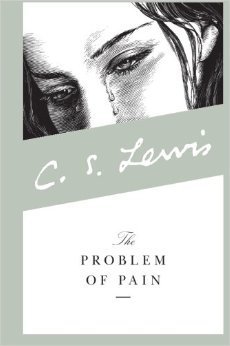 The cover of the book is used under Fair Use for the purpose of this review.
The cover of the book is used under Fair Use for the purpose of this review.The Problem of Pain was a gift from Quintessential Editor.
I consider myself a christian, though perhaps the worst I know. So any chance to read a book that provides insight is a welcome thing in my world.
This book approaches the overarching question of, “Why does God allow pain in this world?”
I’ve given a lot of thought about how best to approach this review, and I feel that the most appropriate way is to simply state what I agreed with, what I disagreed with and what my reactions were.
Perhaps the number one reason I am concerned for my soul is that I believe and know that God exists, and I am never certain if I’m serving his will (more on that below). A simple search of the book’s title will reveal a quote from Lewis, “A man can no more diminish God’s glory by refusing to worship Him than a lunatic can put out the sun by scribbling the word ‘darkness’ on the wall of his cell.”
 I will not use this book to prove my state of mind any more than I will to dispute the book’s content. I believe a man’s actions are either in line with God’s will, or contrary to it. A man may choose to go against God’s will because God granted man the power of choice. Yes, man can choose to refuse to worship, but that refusal doesn’t diminish God, it demises and condemns the man refusing. Here I feel it appropriate to mention that it is my opinion that the best way a man worship’s God is in living out his purpose. The fear comes from the line between one’s conviction in what he’s doing is God’s will vs assuming any man can actually KNOW God’s will. This is an issue I would greatly appreicate more elaboration on.
I will not use this book to prove my state of mind any more than I will to dispute the book’s content. I believe a man’s actions are either in line with God’s will, or contrary to it. A man may choose to go against God’s will because God granted man the power of choice. Yes, man can choose to refuse to worship, but that refusal doesn’t diminish God, it demises and condemns the man refusing. Here I feel it appropriate to mention that it is my opinion that the best way a man worship’s God is in living out his purpose. The fear comes from the line between one’s conviction in what he’s doing is God’s will vs assuming any man can actually KNOW God’s will. This is an issue I would greatly appreicate more elaboration on.
Lewis mentioned mental pain. I agree that mental pain is much more difficult to bear. I have a great many memories of physical pain, but the trails which caused me the most despair and discomfort arose not from the physical injury of a limb or joint, but from the wounds my heart has suffered. My point? I would happily surrender any sense, limb, or physical discomfort for the simple peace of knowing I belong. This does not in any way indicate my desire to encounter or deal with physical pain. I’m so far blessed to have avoided extreme amounts of physical pain. I don’t enjoy heartburn or cuts, but those fade. I can not speak to the degree of pain suffered through some of the injuries I fear. All I can say with honesty and conviction is mental pain endures, and physical pain fades. A man can only endure so much in either fashion, but mental pain is, for me at this juncture of my life, much more challenging to bear.
 My idea of heaven is simply writing. A pen and infinite notebook would do, but I’d get a lot more done with a lap top and an infinite hard drive.
My idea of heaven is simply writing. A pen and infinite notebook would do, but I’d get a lot more done with a lap top and an infinite hard drive.I will not transcribe Mr. Lewis’s quote on heaven, but it is the core of what I found the most encouragement in. It is the quote for which I will always bless Corey. Lewis spoke about the “secret signature of each soul,” and that resonated with me. I’ve spoken a few times. I have friends who simply don’t understand why I’m willing to suffer exhaustion, sadness, disappointment and despair. For me, writing, the process, craft and creation of writing. When I sit and write, truly create, I feel as if that is the thing for which I was made. And that brings me to my fear and where I respectfully disagree with Mr. Lewis.
May God forgive me if I’m wrong.
The premise of this book is that God speaks to us through pain. While I respect and agree with a great deal of what Mr. Lewis said, I can not in any way wrap my mind around the idea that God speaks to us in our feelings. This may be the mistake that costs me my soul, but I do so in ignorance and not defiance.
 The quote reads, “We can ignore even pleasure, but pain insists upon being attended to. God whispers to us in our pleasures, speaks in our conscience, but shouts in our pains: it is his megaphone to rouse a deaf world.”
The quote reads, “We can ignore even pleasure, but pain insists upon being attended to. God whispers to us in our pleasures, speaks in our conscience, but shouts in our pains: it is his megaphone to rouse a deaf world.”
For me, to believe God speaks to me in pain (especially at this point in my life) would be for me to not simply give up that for which I feel I was made, but for me to feel as though God would use pain to teach me, or pleasure to reward me. I don’t argue that God is to us as we are to animals, but I think God, in his grace and wisdom, would find more effective tools to train man than positive and negative reinforcement. For example, I’ve done things in life in which I’ve enjoyed quite a lot of pleasure, but even I’m aware of how sinful they were. I’ve done things I knew would cause me great pain. The pain in my heart that will haunt me until the day I day, which will HURT me until the day I no longer feel anything, was done because it was right. This is my anecdotal rebuttal to the idea that God teaches me through pain.
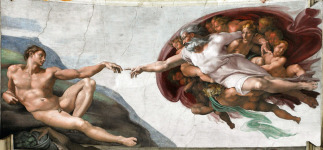 What I believe in this regard is that God gave us free will, and demands obedience to His will. What pain I suffer I do not believe is God punishing me any more than I feel that the joys I receive are rewards. The blessings and trials I receive are for me to learn and grow from. They are, in my individual opinion, not devices of training, but tools for growth. I see a distinction. As a man, I just don’t want my dogs to pee on the floor. So we spank and punish behavior to correct it. It makes sense to draw the correlation, but I feel it’s misplaced. A man just wants his dog to behave; I feel God wants man to become. Man wants animals to behave as man wishes; God wants us, I believe, to become the works of art he sees we can be. This requires more than simple training, but teaching.
What I believe in this regard is that God gave us free will, and demands obedience to His will. What pain I suffer I do not believe is God punishing me any more than I feel that the joys I receive are rewards. The blessings and trials I receive are for me to learn and grow from. They are, in my individual opinion, not devices of training, but tools for growth. I see a distinction. As a man, I just don’t want my dogs to pee on the floor. So we spank and punish behavior to correct it. It makes sense to draw the correlation, but I feel it’s misplaced. A man just wants his dog to behave; I feel God wants man to become. Man wants animals to behave as man wishes; God wants us, I believe, to become the works of art he sees we can be. This requires more than simple training, but teaching.
As I consider the act of free will, Mr. Lewis does a great job of discussing how that self-realization led to the fall of man, I feel free will to be both the requirement of faith and the most dangerous. Here, I come to my great fear.
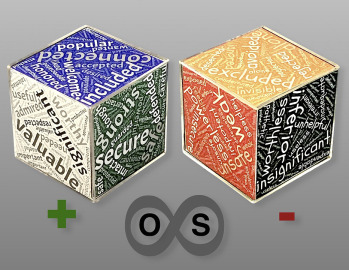 My pain, in my belief, is far more my fault than God’s displeasure with me. My choices and actions have consequences. The religious implications of those actions are not necessarily related to the earthly ones. But I do think about it.
My pain, in my belief, is far more my fault than God’s displeasure with me. My choices and actions have consequences. The religious implications of those actions are not necessarily related to the earthly ones. But I do think about it.
When my sales are lower than ever, when I’m tired and upset, I pray. I pray, not as often as I should, but I do. I pray, and I think to myself, “is this really God’s will? Am I suffering because I’m refusing to see his plan for me?”
Sometimes I feel like the dwarves from the last book of Mr. Lewis’s famous saga. God lays out all those blessings before them, and they can’t see. None can see God’s glory if they refuse to see it. Am I refusing to see what is in front of me, or am I simply running, further up, and further north, to that which I’m meant for. I simply can not know. All I can do is what I feel God wishes for me to do.
 At this point, I remember the most important part of myself. It is when I write, that I most feel I am doing what I’m meant to do. Writing has nothing to do with being read or selling books.
At this point, I remember the most important part of myself. It is when I write, that I most feel I am doing what I’m meant to do. Writing has nothing to do with being read or selling books.
The pain I feel is in regard to my sales and reviews. The lack of earthly success and monetary gain I receive from writing. Even all of that pain is as nothing when I write.
So I leave this blog where Mr. Lewis left me at the end of this book. The feeling I get from writing is like a lock, for which I was made. It is a world made just for me. There are other aspects that I truly don’t enjoy, but only time will tell if they are tools designed to move me where I’m meant to go or simply trials that God is giving me to show me how strong I am. I can’t know God’s will. I only know the pure, unearthly joy I receive when I write. I will not proclaim my entrance to heaven because it is not for me to judge anyone, let alone myself. All I know is, writing is the closest (and infinitely farther still) I come to feeling like I’m in heaven, and so I will continue to do so.
Thanks for reading,
Matt


October 22, 2016
Book Shoutout: Entrepurpose, by Rusty Pang and Brian Laprath
I’ve always said I love it when other authors get published. These particular authors and this particular book makes me that much happier because Rusty is a friend of mine.
Let’s start with the book blurb for Entrepurpose:
Begin blurb
 You are here for a reason. So, the question is: Why?
You are here for a reason. So, the question is: Why?
Entrepurpose is a book inspired by 13 intense years of struggle to find the answer to the question,
“Why am I here?”
That journey took me through three depressions, alcoholism, and unhealthy weight gain as I tried to reconcile my life without purpose.
Now that I know my why, I have experienced an infusion of life and focus that I have never felt before.
This work has become my mission, and I can enjoy it more fully each day. But, it came at a price. That price was 13 years.
My story is our gift to you.
Inside these pages are the tools and principles that led me to understand what I was born to do.
If you apply these principles to your life, you will begin to see that every experience, no matter how painful, is part of your strength. If you feel different from others, a misfit perhaps, this book will show you why different is better than better. Maybe, for the first time, you will begin to accept who you are.
Whatever the reason that brought you here, know that you are here for a reason. That reason can be understood, and once you know it, you will have a responsibility to impact the world in the way only you can.
Welcome to your rebirth.
End blurb
This book is already doing well, and I couldn’t be happier for the creators. It reached number 1 in three categories: Business and Money, Education and Education and Reference.
What’s most important about this book is, it’s designed to help people who truly feel low. All the feedback I’ve seen and all the messages I’ve read continue to say, “This is what we need.” Every writer wants his or her book to have an impact, and the early returns on Entrepurposve indicate this book does that.
Now let’s meet the creators.
 I met Rusty somewhere around two years ago. We both teach at the same school. Over the last few months, we’ve been working more closely as he’s teaching the same segment of the course I teach.
I met Rusty somewhere around two years ago. We both teach at the same school. Over the last few months, we’ve been working more closely as he’s teaching the same segment of the course I teach.
There’s a bond between authors. They don’t have to recognize it or accept it in any way. It’s a bond of caring for your craft. You see it when they’re a bit tired the next day because they rushed home to eat up whatever time they can with their family before they toil away at another job that takes not just a great deal of effort, but an insane amount of mental energy. I’ve watched Rusty as he’s pushed himself to share this with you. It’s not just his story, which alone is something compelling; it’s his passion.
Every day I see him talking to people about personality types and how they gather information. Every thing he does as a teacher is driven to understand how the student thinks and learns, so that he can teach more effectively. I haven’t had a chance to read the book just yet (it’s next on my TBR), but his story and his effort to find ways to reach people are already strong motivators for me.
 I haven’t had the pleasure of getting to know Mr. Laprath. He’s currently a reservist in the Air Force, and any time I can help out a fellow veteran, I’m going to. You can find out more about him on the Entrepurpose website. That site also has a blog and a ton of information worthy of checking out.
I haven’t had the pleasure of getting to know Mr. Laprath. He’s currently a reservist in the Air Force, and any time I can help out a fellow veteran, I’m going to. You can find out more about him on the Entrepurpose website. That site also has a blog and a ton of information worthy of checking out.
So I wanted to take a moment today and share this with you. As most of my followers and those I follow know, I love giving shoutouts when dreams come true. I relblog posts where authors announce they’ve finished a book. I like it when people achieve their dreams, and I wanted to share this achievement with you.
Thanks for reading
Matt


October 19, 2016
Book Review: Magic-Borne by C.L. Schneider
I’m very glad I had the chance to finish this book last week. I’d been excited to read the final book in the trilogy, and I wasn’t disappointed. To remind you all what’s happened so far, please check out my review of Magic-Price land my review of Magic-Scars.
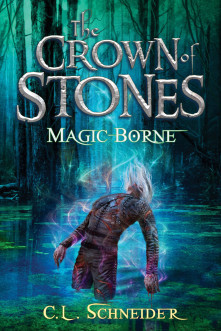 Spoiler Free Summary: Magic-Borne is the final book in the Crown of Stones trilogy. It takes place pretty soon after the events of Magic-Scars. Ian is trying to solve the mystery of his scars, save a loved one, defeat his father, and find a way to bring peace to the land. We get a lot of questions answered and the readers will get a complete resolution, which is all any reader of a series can ask for these days.
Spoiler Free Summary: Magic-Borne is the final book in the Crown of Stones trilogy. It takes place pretty soon after the events of Magic-Scars. Ian is trying to solve the mystery of his scars, save a loved one, defeat his father, and find a way to bring peace to the land. We get a lot of questions answered and the readers will get a complete resolution, which is all any reader of a series can ask for these days.
Character: Ian is still amazing. His arch shows a lot of progress from the character we met in Price. He shines more in this book. I’ll admit I missed some of the other characters who, while still in the book, didn’t get as much air time as I’d have liked, but Ian is, and should be, why people are reading the series. In my review of the last book, I’d noted I would have liked more from them, but I think pulling back a bit was a sound decision. Jarryd had some major impact moments that showed his evolution in some pretty powerful ways, but the rest of the characters simply don’t get a lot of face time. It’s understandable given the ending, but I won’t lie that I wished they had a bigger role.
Exposition: This is about the same as the last book. Schneider has a knack for blending exposition with description to help the reader avoid large blocks of data dumping. I almost never notice the exposition in her work.
 Worldbuilding: So what I have to do here is admit that if someone shouts that the ending “seems” convenient (or at least the plot device that brings about the end), I couldn’t get too angry because I’d understand what they see. I’d like to argue though that what Schneider did here is not MUCH different (if not even done better) than what McCaffrey did in Dragon Riders of Pern. Before anyone throws stuff at me, realize I’m only drawing a correlation between plot devices.
Worldbuilding: So what I have to do here is admit that if someone shouts that the ending “seems” convenient (or at least the plot device that brings about the end), I couldn’t get too angry because I’d understand what they see. I’d like to argue though that what Schneider did here is not MUCH different (if not even done better) than what McCaffrey did in Dragon Riders of Pern. Before anyone throws stuff at me, realize I’m only drawing a correlation between plot devices.
Pern is my favorite series (by a lot) and will always be. But if the plot device in that series didn’t bother you, the plot device in this one shouldn’t either. Schneider did a great job closing all the loops here and letting the readers learn about a complex magic system as they needed to. She sets up the ending to be complete and fulfilling while simultaneously leaving the door open for more books from that world.
Dialogue: I’d say the dialogue in Scars was better. There were scenes and arguments in Borne that felt a little quick for me. As I write this, I’d have to say Scars was my favorite in the series on a lot of fronts. That doesn’t take away from what this book is and could be. The biggest difference stylistically was the pace of the dialogue. Even the amount of dialogue felt a bit more rushed in this book. This was not to a degree as to degrade the quality, just not the same crips, visceral dialogue we saw in Scars. It’s still a great book. I just felt this was a weaker element of the book.
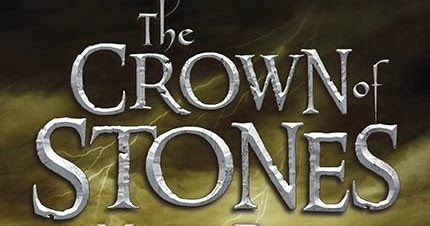 Description: I mentioned problems with how I saw characters in the review for Scars, and Schneider followed up her novel with much more character description. Her extra attention to smaller character details made the book that much more visceral than the last. I thought this was a great blend between setting, scene, and character description. This was an improvement from Scars to Borne.
Description: I mentioned problems with how I saw characters in the review for Scars, and Schneider followed up her novel with much more character description. Her extra attention to smaller character details made the book that much more visceral than the last. I thought this was a great blend between setting, scene, and character description. This was an improvement from Scars to Borne.
A note on content: I don’t think this book is as explicit as Scars. There are some adult scenes in this book too. This still serves as a plot device as intimacy is a theme that shifts through each book. Where as with straight romance (note, I’ve only read two), you tend to see scenes like this for the sake of scenes like this. Here, you get steam and impact for the character. That’s something I appreciate.
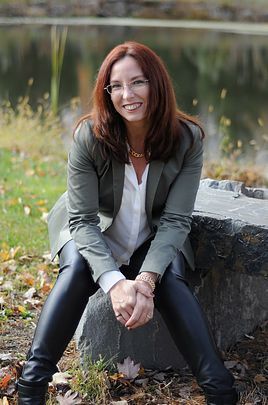 Overall: I stand by my opinion that Scars is the best of the three, but this book is a very satisfying and complete conclusion to a great story. Where Scars upped the drama and the emotion, Borne lets us slip into the the resolution like a warm bath. I appreciate how this story tied up all the loose ends and let us leave this world feeling as if we’ve seen all there is to see, for now. This also holds true to how I usually feel about trilogies. I tend to like the second act best because that’s where the most drama is. That makes this book a perfect conclusion. No, it’s not the most exciting book because it can’t be. A reader has to leave a story knowing there’s nothing more (in a manner of speaking) to be seen from this arc. Borne does that. If Schneider ever decides to go back, I’m going to be immensely pleased. This was a sold, complete, well told story with an amazing protagonist and a fascinating twist on a few old tropes.
Overall: I stand by my opinion that Scars is the best of the three, but this book is a very satisfying and complete conclusion to a great story. Where Scars upped the drama and the emotion, Borne lets us slip into the the resolution like a warm bath. I appreciate how this story tied up all the loose ends and let us leave this world feeling as if we’ve seen all there is to see, for now. This also holds true to how I usually feel about trilogies. I tend to like the second act best because that’s where the most drama is. That makes this book a perfect conclusion. No, it’s not the most exciting book because it can’t be. A reader has to leave a story knowing there’s nothing more (in a manner of speaking) to be seen from this arc. Borne does that. If Schneider ever decides to go back, I’m going to be immensely pleased. This was a sold, complete, well told story with an amazing protagonist and a fascinating twist on a few old tropes.
Thanks for reading
Matt


October 17, 2016
Caught is FINISHED!
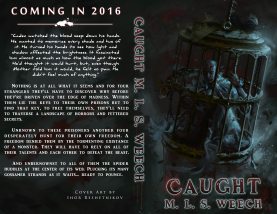 After more time and revisions that I could ever count, I’m so very proud to say that my second book is ready to send off for review and, more importantly, publishing! I don’t know that this feeling will ever get old for me, but I plan to enjoy every moment I can every time I reach this stage. About a year-and-a-half ago, I published The Journals of Bob Drifter. I had no idea what to expect, and I honestly didn’t know what I was doing. I just wanted to publish my book.
After more time and revisions that I could ever count, I’m so very proud to say that my second book is ready to send off for review and, more importantly, publishing! I don’t know that this feeling will ever get old for me, but I plan to enjoy every moment I can every time I reach this stage. About a year-and-a-half ago, I published The Journals of Bob Drifter. I had no idea what to expect, and I honestly didn’t know what I was doing. I just wanted to publish my book.
Caught is different. I’ve mentioned a few times. It’s darker, but I feel like it’s a step forward for me as an artist. I learned a lot from Bob, and I’ll always be proud of it, but if I’m not pushing myself to reach new levels of skill, I’m going to be irrelevant before I’m even heard of.
This process is still going to take some time, but it’s a matter of weeks now instead of months. I want to send it to some reviewers (Kirkus and Red City) for cover blurbs. While they take a swing at it, I’ll probably address some style issues and do another proofread. One thing I regret about Bob was not doing another proofread. It’s a problem that I’m not sure I’ll let stand for much longer, but I don’t have to make that mistake with Caught. So there will be a lot going on here in my life. I’ll be setting up my book for publishing, waiting for the reviews to come back, and taking that time to do another read-through just because I care that much about fixing any mechanical issues that may pop up in the book.
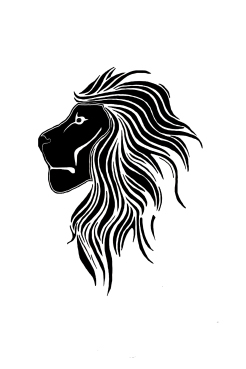 I don’t have a release date yet, but I’ll announce that as soon as I get a few things figured out. What matters to me is first that my dream has come true a second time. That doesn’t happen without God’s help, and a lot of help from some very important mortals as well.
I don’t have a release date yet, but I’ll announce that as soon as I get a few things figured out. What matters to me is first that my dream has come true a second time. That doesn’t happen without God’s help, and a lot of help from some very important mortals as well.
I’d have to start here with my mom. The reason for that is she had a nightmare once. She told me about it. I filed the thought away and the result is this book. I love my mom. I think a lot of my creativity and drive comes from her side of the family, and this book is a result of her many conversations with me about stories.
Ben is my alpha reader, editor, best friend, and pretty much whoever else I need in life. He is and will ever remain the first person I send my books to. If I never sell another book (I’d rather sell a million), I’ll keep writing them so long as he enjoys them.
Rosa was the first person to read this book (and a very rough draft at that) after Ben. I’d just gotten to know her and she picked this up to read and wouldn’t put it down. She took it home and read through it. That was one of the first times anyone just read my work for the sake of reading. It was a big moment for me. This was before Bob came out, and I was very nervous about sharing my work. She’s of the opinion this book was better. I have a soft spot for Bob, but I’ll admit I feel confident this book is, at the very least, written better, especially after all the editing.
Marco Palmieri of Otherworld Editorial took what I thought was my final draft and showed me how to make these characters even more impactful. He did this during an incredible transition in his career and some emotional struggles as well. Even then, he and I sat over a phone call and hashed out the character and plotting of the book to find ways to amp up the development and growth of the characters.
Quintessential Editor did a few passes on my book. He’s my continuity editor on this project, and I’ll keep working with him as long as he keeps putting up with my random messages and Naruto interruptions. Corey, thanks for your unwavering support.
 Peggy has become a huge supporter of mine after Bob. She’s read a few key scenes here and there, and I can’t wait to see what she thinks of the finished product. She’s a one-person sales and celebration team who I’ve come to admire more and more since meeting her.
Peggy has become a huge supporter of mine after Bob. She’s read a few key scenes here and there, and I can’t wait to see what she thinks of the finished product. She’s a one-person sales and celebration team who I’ve come to admire more and more since meeting her.
There are more, but these are the people who I wanted to give special appreciation to as I head into the publishing process.
So what do you do when you accomplish a life-long dream for a second time? You start writing another story. I’ll plow straight into Sojourn in Despair so that project can be finished by deadline.
Thanks for reading,
Matt





